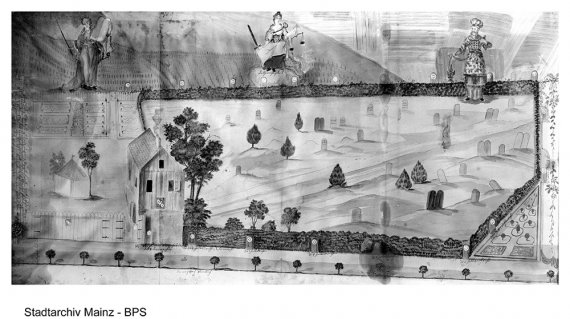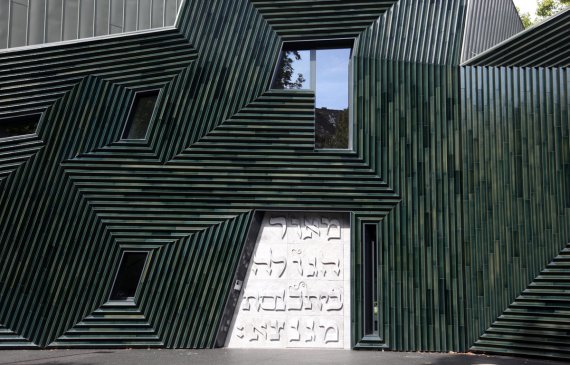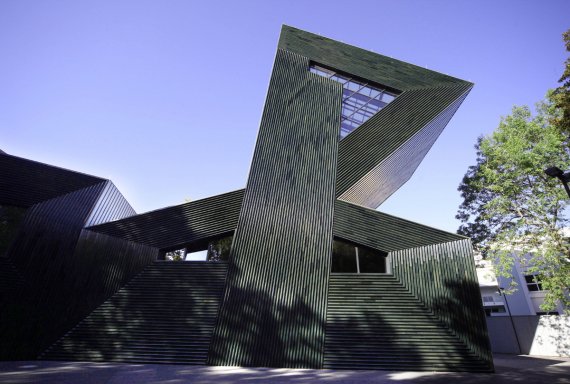Mainz
Jewish Quarter Mainz
After destruction caused by fires and war, and through stages of rebuilding, there are no longer any visible remains left of the late medieval Jewish Quarter in Mainz. Too much had been destroyed: after the pogrom from 1096 with more than 1,000 murdered and repeated attacks, Jews were expelled from Mainz in 1438. Following the re-founding of the community in 1445, there was a temporary expulsion in 1462, and then the final expulsion in 1470/71. The synagogue was then used as an urban coal depot. It was not until 100 years later that the Jews re-settled in Mainz. In November 1938 in Mainz, the synagogues, prayer rooms, and the »Museum of Jewish antiquites«, opened in 1926, were destroyed, an example of the destruction that happened throughout Germany and Austria.
Localizing the medieval mikveh and other structural remains is is appealing and part of the whole approach towards ShUM, but within the frame of the UNESCO application this is not a priority.
Old Jewish Cemetery "Judensand"
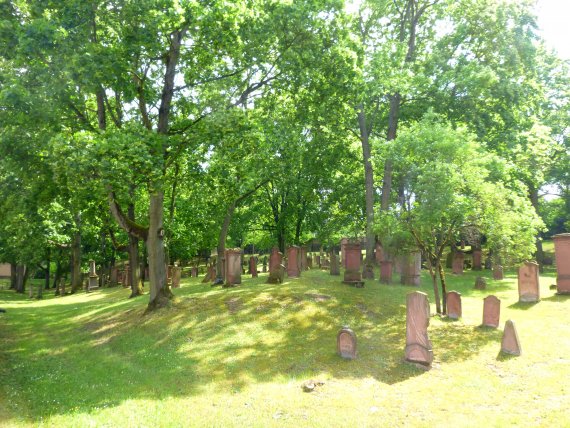
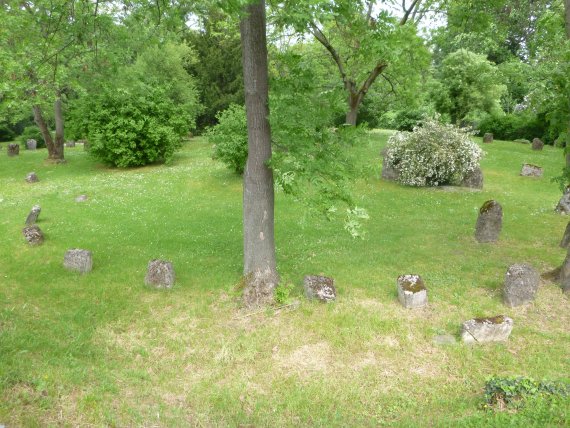

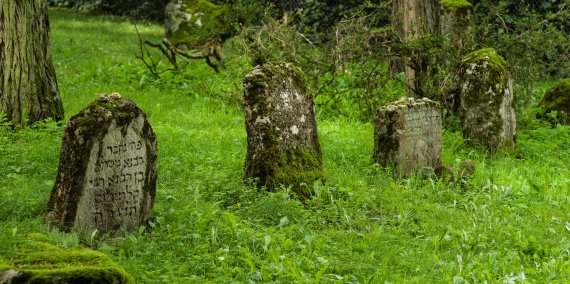
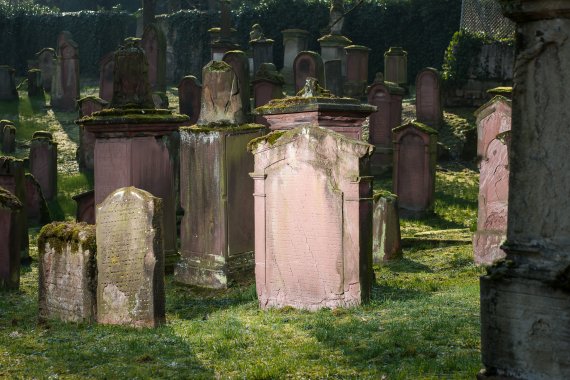
In huge parts preserved is the cemetery »Judensand« in the Mombacher Strasse. The Old Jewish Cemetery in Mainz is the oldest known burial place of the Jewish community in Magenza (from about 1012). Along with the »Holy Sand« in Worms, it is considered the oldest Jewish cemetery in Europe.
Expulsion of the Jews had led time and again to destructions and misuse of the »Home of Eternity« and thus to serious loss of tombstones. Since the 1820’s, during construction works in Mainz important Jewish gravestones had come to light.
In 1926, these uncovered exceptional gravestones were combined to form a »Memorial Cemetery«, to enable visibility of the heritage site and to underline the rooring of the Jews in Magenza and in Germany.
In the 17th century, a Jewish community slowly reconstituted itself in Mainz. From 1700 onwards, the remaining part of the cemetery was used again by the Jewish Community. It is is the lower burial ground located today on Mombacher Straße. This area was occupied until 1888.
In 1862, the Jewish community reacquired a plot of land that was also located on the original medieval site and was to serve in the future as an expansion area for the already heavily occupied cemetery. However, this did not come to pass, as a new Jewish Cemetery was established at the end of the 19th century in the central cemetery on Untere Zahlbacher Straße.
The Memorial Cemetery is an outstanding place and space and unique in the Jewish World.
A visitor pavillon outside the "Judensand"
In the context of the UNESCO-application for recognition of the ShUM-Sites of Speyer, Worms and Mainz, the state capital, which is involved with the component of the old Jewish cemetery Judensand has announced a planning competition. The Judensand holds nearly 1800 historic gravestones. Among them are more than 180 gravestones from the period of flourishing of the ShUM communities from the 11th to the 13th century, placed in the memorial cemetery. In order to ensure a new enclosure, a visitor pavilion and at the same time the preservation of this unique cemetery in the long term, the state capital Mainz, under the auspices of the Green and Environmental Office, announced a non-public planning competition, for which three prizes were selected during the jury meeting on September 10, 2020. Important for all future plans is the clear reference to a sensitive, monument-friendly, halachic and world heritage compatible handling of the cemetery. The competition was organized by the specialist offices of the state capital Mainz in close consultation with the state authorities for archaeology and monument protection, the SchUM Association and the Jewish Community of Mainz. The first prize was awarded to the office Sinai Gesellschaft von Landschaftsarchitekten GmbH with Holzer Kobler Architekten GmbH, Berlin. Here, the complex task was skillfully implemented and shows a sensitive approach to the nominated world heritage site.
Roots in the future: the New Synagogue in Mainz
In Mainz the spectacular synagogue construction of architect Manuel Herz was officially opened in 2010. In his language of form Herz metaphorically took up both the ShUM-wisdom as well as the teachings of the Gerschom ben Jehuda. Gershom ben Jehuda, also referred to as Meor ha-Gola, “light of exile” (around 960 in Metz - 1028 in Mainz). He was one of the most famous Talmud teachers of his era and formative for the Jewish legal discussion.
The building, observed from the side, forms the Jewish-liturgical concept Keduscha, i.e. a spoken blessing for sanctifying and/or exalting mundane objects. Other connections to Jewish discourse as well as the Torah or Piyyutim written in ShUM are to be found throughout the building. In this way this present-day monument reflects the teachings of ShUM which are also its base. Tradition and modernity form a symbiosis.

